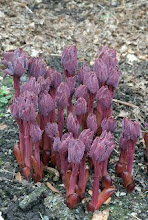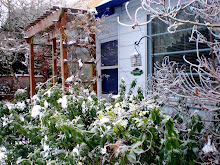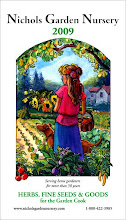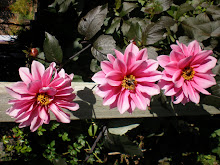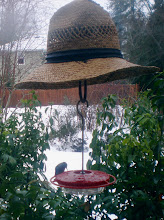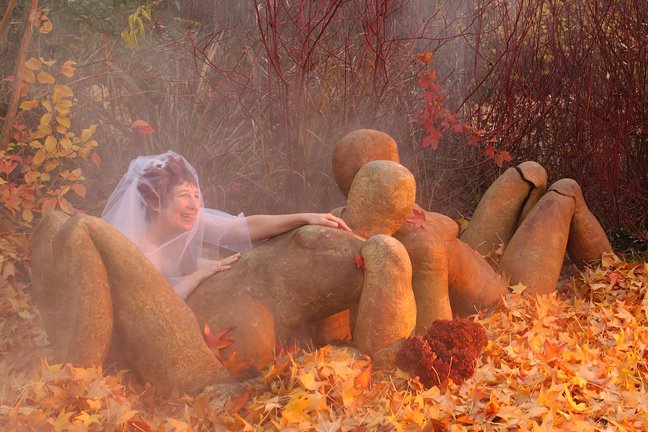What I enjoy writing about most of all is what happens to us when we garden—how gardening changes us, shapes us, teaches us, gives us gifts we could never have imagined. In “Garden Retreats” I wrote about creating an outdoor sanctuary; in “Married to My Garden” I wrote about my love affair with gardening; and in “Garden Muse,” my weekly column for the Portland Tribune, I often reflect on how the garden is a source of great joy and inspiration.
So I’m thrilled that my personal essay, “The Garden Saved My Life” was just published in a new anthology, “The Ultimate Gardener,” in the section aptly titled Garden Transformations. For it’s the transformative aspect of gardening that I’m especially interested in these days—how the garden heals us, comforts us, and takes us out of our small everyday selves into the bigger soulful part of our nature.
The stories inside The Ultimate Gardener will inspire you, make you laugh and cry, and bring you new ideas about gardening. You can order the book on line and find it in many bookstores. I’ll be signing personalized copies at upcoming events this spring and summer. If you’d like to receive notices about dates and places, just let me know and I’ll e-mail you directly. The book makes a perfect Mother’s Day, Father’s Day, Birthday or Anniversary present.
Monday, March 23, 2009
Monday, March 9, 2009
Kiss the Ground
I just returned from a visit to the east coast and now I want to kneel down and kiss the ground here. First of all, our gardens are green with grass and OK, maybe weeds too, but still green is everywhere—Doug Fir, pines, spruce, hemlock, Japanese incense cedar, eucalyptus, evergreen viburnums, daphne, sweet box, boxwood, box honeysuckle, Senecio greyii, Phlomis fruticosa. The lawns on the east coast are brown, and yes, there are evergreens, but nowhere near the variety that we can grow.
Hellebores are blooming here and we take them for granted every winter, along with snowdrops, lungwort (Pulmonaria), early daffodils, witch hazel (Hamamelis), winter hazel (Corylopsis) and winter aconites (Eranthis). We can actually design a garden with winter as the backbone, an easy way to guarantee happiness in the quiet season. Make sure to include a witch hazel or ‘Dawn’ viburnum for flowers and scent; sweet box (Sarcococca) for fragrant evergreen understory in the shade; Mahonia x Charity for yellow flowers that draw the earliest hummingbirds; and winter cyclamen for a splash of hot pink flowers and marbled leaves.
It may hail and snow in March, but the robins are still out there singing their hearts out and searching for worms. Rose canes are breaking new growth and every day I go out and prune a few of the dozens and dozens that wait patiently for their annual haircut. This is the time to spot the early weedy grasses and dig them out while the ground is soft, to find the baby cresses and yank them before they bloom and go to seed, to detect the buttercups sneaking in between the irises and geraniums and trowel them out. So don’t be a sissy. Throw on some hooded fleece and get out in the garden. Sooner is better to get going on the spring garden and greet your plant friends as they emerge from winter dormancy.
Hellebores are blooming here and we take them for granted every winter, along with snowdrops, lungwort (Pulmonaria), early daffodils, witch hazel (Hamamelis), winter hazel (Corylopsis) and winter aconites (Eranthis). We can actually design a garden with winter as the backbone, an easy way to guarantee happiness in the quiet season. Make sure to include a witch hazel or ‘Dawn’ viburnum for flowers and scent; sweet box (Sarcococca) for fragrant evergreen understory in the shade; Mahonia x Charity for yellow flowers that draw the earliest hummingbirds; and winter cyclamen for a splash of hot pink flowers and marbled leaves.
It may hail and snow in March, but the robins are still out there singing their hearts out and searching for worms. Rose canes are breaking new growth and every day I go out and prune a few of the dozens and dozens that wait patiently for their annual haircut. This is the time to spot the early weedy grasses and dig them out while the ground is soft, to find the baby cresses and yank them before they bloom and go to seed, to detect the buttercups sneaking in between the irises and geraniums and trowel them out. So don’t be a sissy. Throw on some hooded fleece and get out in the garden. Sooner is better to get going on the spring garden and greet your plant friends as they emerge from winter dormancy.
Subscribe to:
Comments (Atom)



































